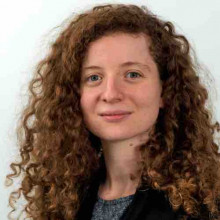Software is as indispensable in current research as it is in the world around us - and yet it is still difficult to grasp what we mean when we talk about it.
The Encyclopædia Britannica limits its definition to the following:
“Software, instructions that tell a computer what to do. Software comprises the entire set of programs, procedures, and routines associated with the operation of a computer system. The term was coined to differentiate these instructions from hardware—i.e., the physical components of a computer system.”
However, software is much more than that.
It is a sophisticated collection of ideas that can be implemented as digital objects. The logic of the data transformation, its concept, is not digital and can be considered part of a software project which is beyond the digital object. When looking at digital objects, there might be many representations of this concept in different versions of binary artefacts (readable *only* by machines) or source code artefacts (readable by machines but also by humans).
In the scholarly community, most researchers are using, producing, or analysing software. This is why we should consider software in all its facets, that is as one or more of the following:
- A research tool
- A research outcome
- An object of research
What’s FAIR?
In recent years, spurred on by the introduction of the FAIR guiding principles (Wilkinson et al. 2016), the scholarly community has put much effort into promoting the importance of data and research objects.
The FAIR guiding principles call for four foundational actions to improve the way data is shared and may be reused. Data should be:
- Findable
- Accessible
- Interoperable
- Reusable
In addition there are 15 specific guiding principles that should be applied when trying to FAIRify data.
Do we need FAIR software?
From the available documentation - including the European Commission report “Turning FAIR into reality”- it's clear that the FAIR guiding principles are not directly applicable to software in their current format and some tailoring and adaptation is required. Nevertheless, many actors in the FAIR ecosystem call for the FAIRification of software to ensure better discoverability, re-usability, and reproducibility of research as a whole.
When it comes to software, interoperability and reusability already have a substantial meaning. Trying to accommodate all the other foundational principles may burden researchers who already face significant challenges when developing or maintaining software, which is a complex and living object.
These limitations are depicted in the graphic below and demonstrate why it's necessary to build a bridge between software practices and the FAIR principles. We need to understand what is already being done in software and computer science communities, and to connect that to current work towards realising a FAIR ecosystem which provides optimal support for the discoverability and re-use of all digital research objects.
.
Source: Assessment report on 'FAIRness of Software'
Assessment report on 'FAIRness of software'
In an attempt to bring together the visions of the abovementioned communities, FAIRsFAIR has published its first milestone on the topic of software. The document analyses the state of the art in research software management and assesses its alignment with the FAIR principles. Version 1.1 of this milestone: Assessment report on 'FAIRness of software’ is now available on Zenodo.
Introductory Webinar
To launch the community review of the milestone, the FAIRsFAIR project held an open webinar on 23 November 2020 entitled “FAIR + Software: decoding the principles”.
The main objectives for the webinar were:
- To review different mechanisms, components and infrastructures that can improve the FAIRness of software in the scholarly ecosystem (discussed in section 5 of the report)
- To present the analysis of the relevance of the FAIR principles to software (discussed in section 3 of the report)
- To introduce 10 high-level recommendations for future work to define FAIR principles for research software (discussed in section 6 of the report)
A video recording of the webinar is available with the slide deck here.
Next steps
The report and webinar are just the beginning of the conversation about software development and the FAIR ecosystem within the scholarly community.
Another initiative, the joint RDA, FORCE11 & ReSA working group, launched in June 2020 and endorsed in September 2020, has set the goal to define the FAIR principles for research software. It . You are welcome to join the effort and contribute to this exciting task.
How to get involved
1. Give us your feedback on the FAIRsFAIR Assessment report on 'FAIRness of software.` A commentable version is available until 10 January 2020. Feel free to share and contribute!
2. Join the FAIR4RS Working Group mailing list to receive updates, contribute to the working group, and discuss the FAIR definition for research software
3. Adopt the suggested infrastructures and mechanisms when it comes to your software
Spread the word and let’s start recognising software in academia!
Acknowledgements
I would like to thank Hylke Koers and Patricia Herterich for providing valuable input through comments on this blog post.
Blog post written by Morane Gruenpeter from Inria research center in France

